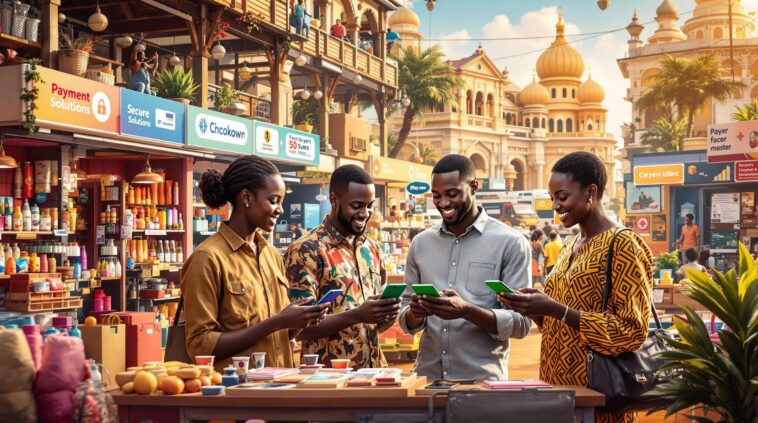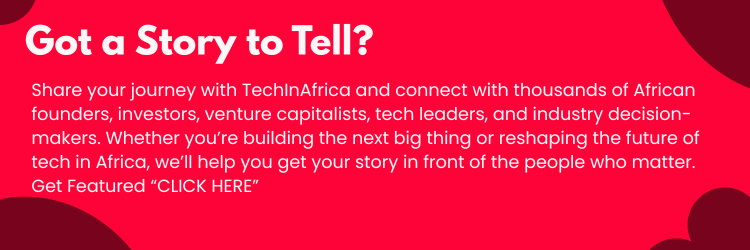- Payment Issues: Fragmented systems and low financial inclusion hinder transactions.
- Logistics Problems: Delivery delays and infrastructure gaps affect customer satisfaction.
- Lack of Trust: Concerns about product quality and seller credibility deter buyers.
- Limited Internet Access: Only 28% of the population is online, restricting participation.
- Regulatory Barriers: Complex cross-border trade rules slow business expansion.
- Cybersecurity Risks: Rising cybercrime threatens online transactions.
- Financial Exclusion: Many potential customers lack access to banking services.
- Innovation Gaps: Underserved markets need tailored solutions.
Quick Wins:
- Payment: Use local gateways like Paystack and mobile money (e.g., M-Pesa).
- Logistics: Partner with providers like DHL or explore drone delivery.
- Trust: Offer verified products, clear return policies, and local support.
- Internet Access: Expand affordable mobile data and promote digital literacy.
- Regulations: Leverage AfCFTA for simplified trade policies.
- Cybersecurity: Adopt encryption and fraud detection tools.
- Financial Inclusion: Integrate mobile money and digital wallets.
- Innovation: Explore AI, blockchain, and mobile-first strategies.
Africa’s e-commerce future depends on tackling these challenges with practical solutions and technology.
In-App eCommerce payment (mobile money & banktransfer) – eCommerce companies opening Kenya & Nigeria
1. Improving Payment Processing
Payment processing is one of the key hurdles for African e-commerce businesses, but new solutions are helping to tackle these challenges. By integrating local payment gateways and mobile money services, businesses can boost transaction success rates and improve customer experiences.
Using Local Payment Solutions
African payment gateways like Paystack, VoguePay, and Interswitch have transformed digital transactions by offering services tailored to the region’s unique needs. These platforms provide features such as multi-currency support, fraud protection, and advanced security measures, making transactions smoother for both merchants and customers across the continent.
Mobile money services are also playing a major role in shaping e-commerce, especially in areas where banking infrastructure is limited. For instance, M-Pesa has made it possible for people in remote regions to complete transactions directly through their mobile devices [1]. E-commerce giants like Jumia have adopted these payment methods, integrating mobile money and local gateways to build customer trust and increase the number of successful transactions [3].
To improve payment processing, businesses should focus on:
- Offering a variety of payment options, including mobile money and local gateways
- Ensuring top-notch security aligned with global standards
- Using data analytics to refine payment methods and detect fraud
While better payment systems create a solid starting point for e-commerce growth, efficient logistics are just as important to meet customer expectations. The next section dives into strategies for improving delivery and fulfillment across Africa’s diverse markets.
2. Improving Logistics and Fulfillment
Once payment processing hurdles are addressed, the next big challenge in e-commerce is ensuring smooth logistics. In sub-Saharan Africa, delivery times average 10-14 days, a stark contrast to the 2-5 days typical in more developed markets [1]. This presents a clear obstacle for businesses aiming to meet customer expectations.
Collaborating with Logistics Providers
Advancements in logistics technology are changing the game for African e-commerce. For example, DHL Express operates in over 50 African countries, offering services like international shipping and real-time tracking [6]. Their extensive network makes them a go-to for businesses looking for reliable global shipping solutions.
On the local front, companies like Kobo360 are making waves. This Nigerian startup uses a digital platform to connect businesses with trucking and warehousing services, enabling cross-border logistics along with real-time shipment tracking [6].
Tackling Last-Mile Delivery Challenges
Reaching customers in areas with limited infrastructure demands innovation in last-mile delivery. Zipline, for instance, has introduced drone delivery in Rwanda and Ghana, drastically cutting delivery times and improving access to remote regions [8].
To enhance last-mile logistics, businesses can:
- Partner with local couriers to navigate specific markets effectively.
- Use digital tools to streamline logistics management.
- Explore hybrid models like drone deliveries or local pickup points to address infrastructure gaps.
| Logistics Provider Type | Key Benefits | Ideal Use Cases |
|---|---|---|
| Global Providers (e.g., DHL) | Broad international network, reliable service | Cross-border shipping, high-value goods |
| Local Partners (e.g., Kobo360) | Deep market insights, cost efficiency | Regional distribution, last-mile delivery |
| Tech-Driven Solutions | Real-time updates, higher efficiency | Urban deliveries, time-sensitive shipments |
While efficient logistics are key to timely deliveries, they also play a major role in building customer trust – an essential factor for growing e-commerce in Africa.
3. Building Trust in E-commerce
While e-commerce is growing, concerns about product quality and seller credibility still hold back its full potential. Even with reliable logistics ensuring deliveries, trust is what keeps customers coming back.
Ensuring Product Quality
Worries about product quality can shake consumer confidence, especially in African e-commerce. Platforms like Konga tackle this issue with systems designed to maintain high standards:
| Quality Control Measure | Implementation Strategy | Impact |
|---|---|---|
| Supplier Verification & Testing | Background checks, audits, and product sampling | Reduces counterfeits, ensures consistency |
| Product Authentication | Tracking systems to confirm authenticity | Ensures genuine products |
| Customer Feedback | Ratings and review systems | Builds social proof |
To win customer trust, businesses need to offer clear return policies and provide detailed product descriptions, complete with high-quality images. This level of transparency helps avoid disappointment and builds loyalty.
Establishing a Local Presence
A physical presence adds credibility in African markets. Jumia has set an example by operating local warehouses, offering multilingual support, and engaging with communities. This approach not only builds trust but also improves customer service [4].
Ways businesses can establish a local presence include:
- Setting up warehouses and service centers close to customers
- Offering customer support in local languages
- Actively participating in local community activities
“Establishing a local presence is crucial for building trust in African markets. It shows that you are committed to serving the local community.” – Sacha Poignonnec, Co-Founder of Jumia [4]
Smaller businesses can also partner with local retailers or set up pickup points in familiar locations. This gives customers a physical connection to the brand without losing the convenience of online shopping.
4. Improving Internet Access and Digital Inclusion
Internet access and digital literacy are still major hurdles for African e-commerce, with only 28% of the population connected online [1]. Affordable mobile internet and better digital skills are key to helping more Africans shop online and join as sellers.
Expanding Mobile Internet
Mobile networks are driving efforts to increase connectivity, with a 43% penetration rate [2]. For instance, MTN has expanded its coverage to over 2,000 rural communities and cut data costs by 40%, making online shopping more accessible. They’ve also introduced zero-rated access to popular shopping platforms, removing cost barriers for users.
| Initiative | Impact |
|---|---|
| Rural Network Expansion | Coverage extended to 2,000+ rural communities |
| Affordable Data Bundles | 40% reduction in data costs for e-commerce use |
| E-commerce Specific Plans | Zero-rated access to major shopping platforms |
Promoting Digital Skills
Around 60% of Africans lack basic digital skills [5]. To tackle this, targeted training programs are popping up across the continent. MTN’s Digital Skills Training program, for example, aims to train 100,000 young Africans in areas like navigating platforms, making online payments, and understanding basic cybersecurity.
E-commerce platforms are also stepping up by offering user-friendly tutorials and multilingual support. Together, these efforts in connectivity and skills training are building a stronger foundation for participation in online markets.
While improving internet access and digital skills is a big step forward, tackling cross-border regulations is just as important for scaling operations.
sbb-itb-dd089af
5. Simplifying Cross-Border Regulations
Navigating regulations across African countries has long been a challenge for e-commerce. The African Continental Free Trade Area (AfCFTA) is working to change this by connecting a market of 1.3 billion people with a combined GDP of $3.4 trillion [2].
Simplifying Trade Policies
AfCFTA is on a mission to eliminate tariffs on 97% of goods, already delivering noticeable results. For instance, border clearance times in East Africa have dropped from an average of 14 days to just 2 days, increasing trade activity by 30%. These changes highlight how unified trade policies can reshape commerce across the continent.
| Trade Policy Impact | Before AfCFTA | After AfCFTA Implementation |
|---|---|---|
| Border Clearance Time | 14 days average | 2 days average |
| Tariffs on Goods | Variable rates | 97% elimination target |
| Intra-African Trade | Limited | 52% projected increase by 2025 [6] |
“The AfCFTA is a game-changer for Africa’s economic development. It has the potential to increase intra-African trade, promote economic integration, and create jobs.” – Wamkele Mene, Secretary-General of the AfCFTA Secretariat [7]
Standardizing Tax Systems
Harmonized tax systems are making cross-border e-commerce less complicated. For example, Ghana’s electronic customs system has cut clearance times from 10 days to just 2 hours, while boosting customs revenue by 25%. Research by the African Development Bank shows that streamlining customs procedures could lower trade costs by up to 15% [9].
E-commerce platforms are also stepping up by using tools like automated customs documentation and blockchain to ensure compliance and transparency. Combined with improvements in payment and logistics systems, these streamlined regulations are unlocking more opportunities for e-commerce across Africa.
As cross-border trade becomes smoother, the focus will need to shift to securing these transactions against cyber threats.
6. Strengthening Cybersecurity
As cybercrime continues to grow, protecting African e-commerce businesses and their customers has become more critical than ever. The fast-paced expansion of the sector calls for strong security measures to safeguard transactions and build customer confidence.
Leveraging Advanced Security Measures
Top e-commerce platforms in Africa, like Paystack and VoguePay, are leading the way by adopting advanced security tools. These include data encryption, fraud detection systems, and compliance with frameworks such as ISO 27001. By integrating these technologies, they’ve managed to reduce fraudulent transactions by up to 65%, all while ensuring legitimate purchases are processed without disruptions [2].
Promoting Cybersecurity Awareness
Organizations like the African Cybersecurity Alliance (ACA) are stepping in to help businesses strengthen their defenses. They provide training programs and resources focused on creating a culture of security awareness. Key aspects of their initiatives include:
- Conducting regular security audits and monitoring
- Training staff to recognize and respond to threats
- Deploying automated security systems
- Ensuring compliance with global security standards
By combining advanced technology with education and adherence to best practices, African e-commerce platforms are taking meaningful steps to protect customer data and build trust. This approach not only secures transactions but also supports the long-term growth of the digital economy.
With these security foundations in place, the focus can shift to expanding financial access for both businesses and consumers.
7. Increasing Financial Inclusion for E-commerce
Mobile technology is transforming access to financial services, allowing millions of previously unbanked individuals to join the digital economy.
Integrating Mobile Money with E-commerce
In 2022, mobile money services processed $1.3 trillion in transactions, reshaping e-commerce in Africa. Sub-Saharan Africa leads the world, with 57% of adults using mobile money services [9][6]. Platforms like M-Pesa in Kenya and MTN Mobile Money have seamlessly connected with major e-commerce sites, opening up online shopping to millions who previously lacked access to traditional banking [2].
Partnering with Financial Institutions
Jumia’s partnership with Mastercard in Nigeria has introduced new payment options tailored for unbanked customers [2]. These collaborations have widened financial access by offering:
- Digital wallets linked to existing banking systems
- Installment payment plans for greater affordability
- Connections to established financial networks
Supportive policies from Nigeria’s Central Bank have further encouraged mobile money use and e-commerce expansion. These regulations have helped e-commerce platforms reach underserved populations, fostering broader financial access.
“By integrating mobile money and partnering with financial institutions, businesses can tap into the vast unbanked population, thereby driving growth and sustainability in the sector” [1][4].
8. Encouraging Innovation in E-commerce
African e-commerce is evolving with new ideas that address challenges and open doors for growth. Platforms like Jumia Health (healthcare), uLesson (education), and Farmcrowdy (agriculture) are breaking into underserved markets, bringing better access to services and investment opportunities.
Technology is playing a key role in this transformation. For example, Twiga Foods uses connected devices and AI to improve fresh produce delivery, cutting down on waste. Meanwhile, companies like Flutterwave and Paystack leverage AI and data analytics to streamline transactions. Their partnerships highlight how teamwork can lead to better payment solutions.
With mobile users projected to hit 475 million by 2025 [2], mobile-first strategies are becoming essential. Businesses are creating smart chatbots for customer service and exploring blockchain to make supply chains more transparent. These advancements aim to solve major issues like trust, delivery efficiency, and financial access, setting the stage for long-term growth.
Conclusion: Realizing Africa’s E-commerce Potential
Africa’s e-commerce landscape is poised for growth, but it requires a focused approach to address its unique challenges. Stories like Flutterwave demonstrate how smart solutions can make a big difference across the continent.
To drive progress, combining new technologies with practical strategies is key. Improving cybersecurity, enhancing digital infrastructure, and expanding financial inclusion are critical steps. Tools like AI and blockchain can also play a role in speeding up growth. Businesses must keep an eye on transaction data and customer feedback to fine-tune their strategies and stay competitive in this evolving market.
“Understanding the unique characteristics and challenges of the African e-commerce market is crucial. Prioritizing transparency, effective support, and social proof can help build customer trust, which is essential for e-commerce success in Africa.” [8][4]
The future of e-commerce in Africa will rely on smart solutions, trust-building, and addressing challenges head-on. With the right strategies and technology, the continent can create a vibrant online marketplace that meets the diverse needs of its people.
Related posts
- E-commerce in Africa: 2025 Market Analysis and Trends
- African Tech Hub Comparison: Lagos vs Nairobi vs Cape Town
- Ride sharing and ride hailing startups in Africa
- The Best African Tech Newsletters to Follow





